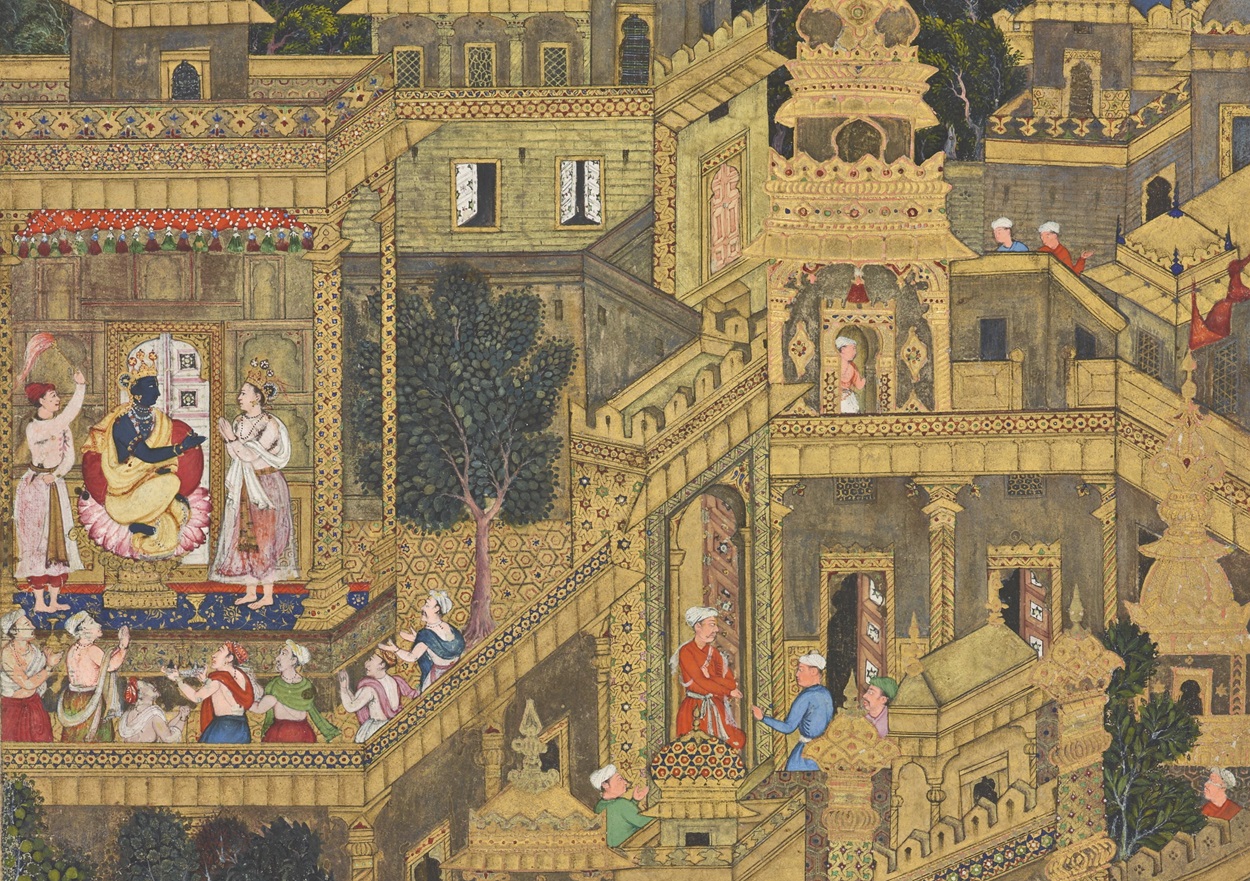A team of archaeologists from the Archaeological Survey of India (ASI) has commenced a study of the submerged remains of “Dvārakā”.
Located near present-day Dwarka, a town and municipality in the Indian state of Gujarat, Dvārakā, also known as Dvāravatī, was a legendary city referenced in sacred literature of Hinduism, Jainism, and Buddhism.
The Bhagavata Purana (10.69.1-12), one of Hinduism’s eighteen major Puranas (Mahapuranas), describes Dvārakā as having over 900,000 royal palaces constructed from crystal and silver, and decorated with gold and large emeralds.
In the Mahabharata, one of the Sanskrit epics of ancient India, the city is one of the Sapta Puri (seven sacred cities) of Hinduism, where Mausala Parva (episode 3) recounts the submersion of Dvārakā:
“After all the people had set out, the ocean, that home of sharks and alligators, flooded Dvārakā, which still teemed with wealth of every kind, with its waters. Whatever portion of the ground was passed over, ocean immediately flooded over with his waters”.
Underwater surveys performed by the ASI have previously found evidence of submerged settlements off the coast of Dwarka in the Arabian Sea. From the typological classification of stone anchors and statues, archaeologists suggest that the settlements served as a port during the Middle kingdoms period of India which became submerged due to coastal erosion.
In a new study led by Prof. Alok Tripath from the ASI, archaeologists are conducting underwater surveys off the coast of Dwarka and the island of Bet Dwarka. The study has already identified an area of interest near the Gomati river to focus their investigations.
According to a press release issued by the Government of India Press Information Bureau: “For the first time in ASI, this team is comprising a significant number of women archaeologists and the most numbers of archaeologists actively participating in underwater investigations. The current underwater investigations mark a significant step in ASI’s mission to safeguard India’s rich underwater cultural heritage.”
Header Image Credit : 15th century painting depicting Dvārakā – Public Domain
Sources : Government of India Press Information Bureau





